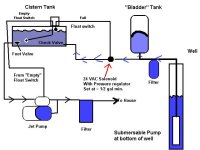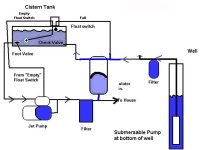CurlyDave
Elite Member
I am wondering what happens if you ever start collecting rainwater from gutters & downspouts, like you mentioned early on.
This is not going to be clean water, lots of dust, bugs, & bird doo.
Is mixing this with your potable water really a good idea?
This is not going to be clean water, lots of dust, bugs, & bird doo.
Is mixing this with your potable water really a good idea?

